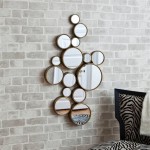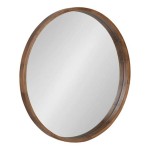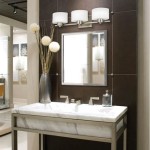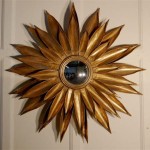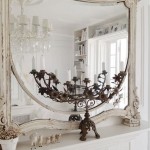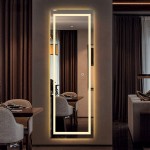How to Remove a Wall of Mirrors
Removing a wall of mirrors can be a challenging task requiring careful planning and execution. Mirrors are fragile, and their weight can present difficulties. This article provides a comprehensive guide for safely and efficiently removing a wall of mirrors, outlining the necessary tools, safety precautions, and removal techniques.
1. Preparation and Safety Measures
Before beginning the removal process, gather the necessary tools and safety equipment. This typically includes heavy-duty work gloves, safety glasses, a dust mask, a drop cloth or old blankets, a pry bar or putty knife, packing tape, a hammer, and possibly a reciprocating saw or utility knife. Having the right tools on hand makes the job smoother and safer.
Protecting the surrounding area is crucial. Cover the floor with a drop cloth or old blankets to cushion falling glass shards and protect the flooring. Adjacent walls or furniture should also be covered to prevent scratches or damage from falling debris. Proper ventilation is also important, especially if using adhesives or solvents.
Personal safety is paramount. Always wear thick work gloves to protect hands from sharp edges and broken glass. Safety glasses shield eyes from flying debris, and a dust mask prevents the inhalation of glass dust and other particles. Having a helper is strongly recommended, especially for larger mirrors or those affixed to walls with adhesive.
2. Assessing the Mirror Installation
Different installation methods require different removal techniques. Identifying the installation method is the first step in planning the removal process. Mirrors may be attached with clips, adhesive, or a combination of both. Carefully examine the edges and back of the mirror to determine the method used.
Mirrors installed with clips are generally easier to remove. The clips, usually located along the edges, can be unscrewed or gently pried off. Mirrors adhered directly to the wall require more care. The adhesive must be carefully separated from the wall and the mirror to minimize the risk of breakage.
For mirrors installed with both clips and adhesive, first, remove the clips. This will help isolate the areas where adhesive is present. Understanding the installation method allows for choosing the appropriate removal tools and techniques, minimizing the risk of damage.
3. Removing the Mirrors
If the mirrors are secured with clips, use a screwdriver or pry bar to carefully remove them. Start at one corner and work along the edges, gently pulling the mirror away from the wall as each clip is removed. Have a helper support the mirror as it is detached to prevent it from falling.
For adhesive-backed mirrors, a thin, flexible putty knife or a wire saw can be used to separate the mirror from the wall. Start at one corner and carefully work the putty knife or wire saw behind the mirror, sawing through the adhesive. Applying heat from a hairdryer can soften some adhesives, making separation easier. Work slowly and patiently to avoid breaking the mirror.
If the mirror is large and difficult to handle, consider scoring the surface with a glass cutter to create smaller, more manageable sections. Be extremely cautious when scoring the mirror, as too much pressure can cause uncontrolled breakage. This technique should only be used if absolutely necessary and with extreme care.
Once a section of the mirror is free from the wall, carefully lift it away. If working with a helper, have them support the weight of the mirror while it is being detached. Smaller mirrors can often be removed by one person, but larger mirrors almost always require assistance. Place the removed mirror on a padded surface to prevent scratching and further damage.
For stubborn adhesive residue on the wall, a specialized adhesive remover may be necessary. Follow the manufacturer’s instructions carefully when using these products, ensuring proper ventilation and wearing appropriate safety gear. Scraping tools may also be used to remove residual adhesive, but care should be taken to avoid damaging the wall surface underneath.
Dispose of broken glass pieces immediately and safely. Wrap broken shards in thick layers of newspaper or cardboard and clearly label them as “broken glass” before placing them in designated disposal containers. Check local regulations for proper disposal guidelines for large pieces of mirror.
4. Cleanup and Wall Repair
After removing the mirrors, thoroughly clean the wall to remove any remaining adhesive, dust, or debris. This may involve scraping, sanding, or washing the wall surface. Prepare the wall for any desired repairs or renovations, such as patching holes or applying a fresh coat of paint. The extent of wall repair will depend on the previous mirror installation method and the desired outcome for the wall space.

Diy Project Removing Floor To Ceiling Mirrors From A Wall In Our House S Dining Room Jeff Geerling

How To Remove A Wall Mirror 11 Steps With Pictures Wikihow

How To Remove A Mirror Glued The Wall Forbes Home

Orc Week 4 How To Remove A Mirror Glued The Wall Pure Happy Home

How To Remove A Wall Mirror 11 Steps With Pictures Wikihow

Orc Week 4 How To Remove A Mirror Glued The Wall Pure Happy Home

How To Safely And Easily Remove A Large Bathroom Builder Mirror From The Wall Site Title

How To Remove A Bathroom Mirror Lowe S

How To Remove A Bathroom Mirror 9 Steps With Pictures Wikihow

How To Remove A Glued Bathroom Mirror From The Wall

